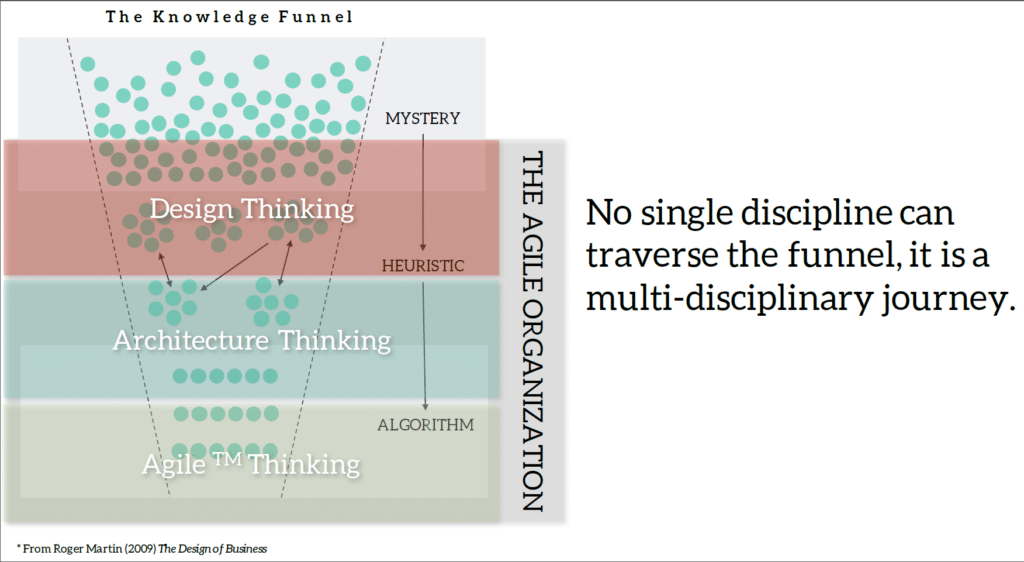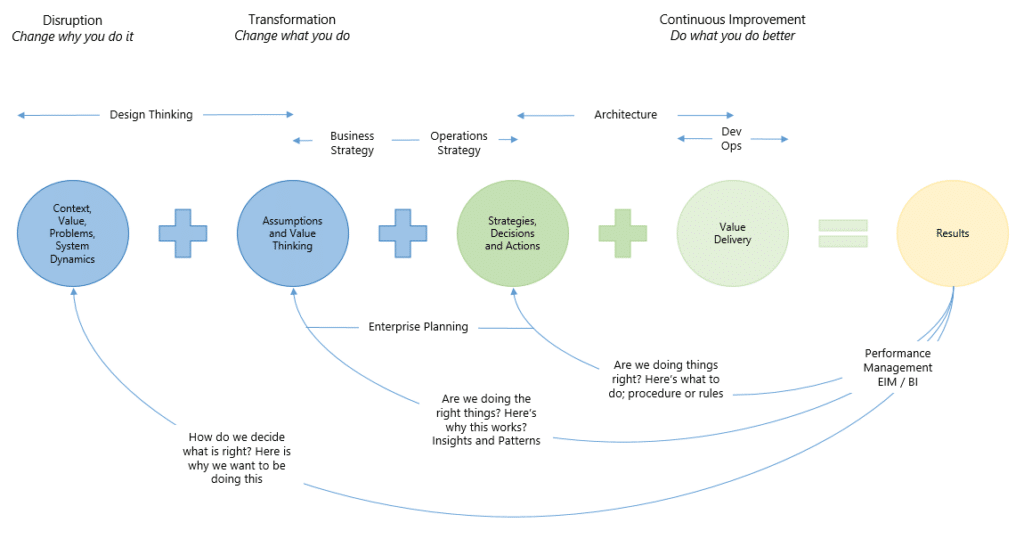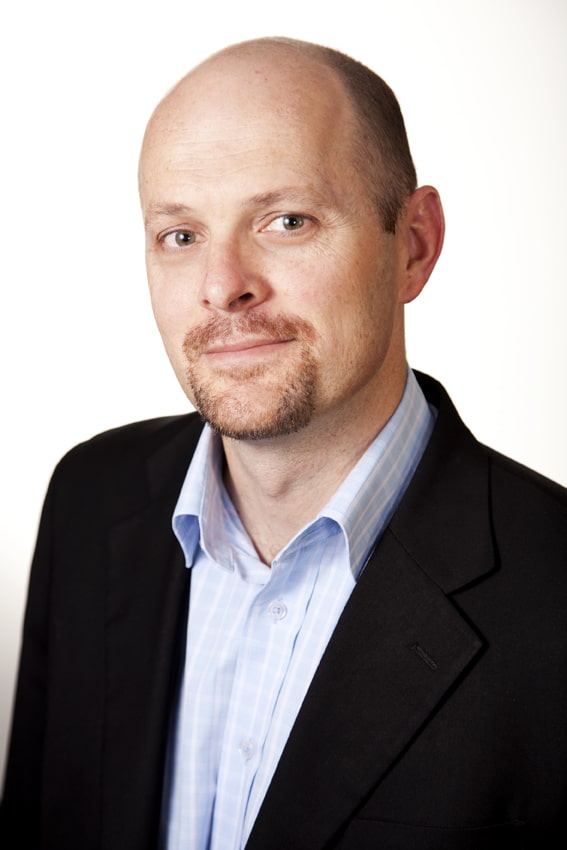Some of you might remember Peter Senge’s great piece of work on the Fifth Discipline. It was one of the published works that first introduced me to systems thinking. One of the key topics from this piece of work was around complexity and how to deal with it. Dealing with complexity requires a shift in your mental model. A move away from concrete analytical thinking that is quite linear in nature, to more intuitive and abstract thinking that is more multi-dimensional in nature.
Some of you might remember Peter Senge’s great piece of work on the Fifth Discipline. It was one of the published works that first introduced me to systems thinking. One of the key topics from this piece of work was around complexity and how to deal with it. Dealing with complexity requires a shift in your mental model. A move away from concrete analytical thinking that is quite linear in nature, to more intuitive and abstract thinking that is more multi-dimensional in nature.
The underlying mindset required for dealing with complexity is that there is a need to move away from clear cause and effect relationships and to be comfortable with working in areas where there is no clear relationship between cause and effect. This is the complexity domain where the problem is in constant flux and any change to the situation causes ripple effects and unpredictability that cascade throughout the system. Once upon a time in a galaxy far, far away I designed and built a piece of software to help cater for, and automate, these types of environments. The purpose was to deal with the “ripple effect”. Take a stone and throw it into a pond and you will see a number of circular waves radiating outward from the stone. Whilst those waves are moving perfectly outward for now, throw in another stone and see what happens. Now the waves affect each other, creating a complex ripple effect. Each time you add another variable (stone) to this pond, you see the waves effecting that otherwise perfect circle.
This is an example of complexity theory, where each decision has a complex ripple effect through an organisation. Consider the vast number of variables that need to be considered, and their impact on decisions, projects, and budgets. No linear process is going to be able to deal with this. The traditional methods of risk management, investment management, project management, architecture and delivery just cannot cope with the levels of complexity we now have to deal with within our modern organisations. Fundamental shifts in mindsets need to occur.
Firstly, it’s important to understand that there is no one size fits all. Designing and operating an organisation for optimum value creation requires a smorgasbord of “sets” – toolsets, skillsets, knowledge sets and mindsets. None of the prevailing disciplines are the silver bullet to help cater for all the variations of horizons, life cycles and stages that an organisation is in at a single point of time. A complex array of multidisciplinary skills are required to be able to deliver the agile organisation. Management that understands this and designs the organisation to mix the “sets” for the right outcomes are those that create cultures of success and truly disruptive organisations.

High levels of uncertainty and complexity. The modern organisation has many unknowns, and it is unlikely that historical data can help. All that this does is point to the past mindsets and decisions and the sometimes flawed heuristics that got us to the outcomes. We need to make new mental and mindset pathways to be truly innovative. I often refer to the complexity and uncertainty space as the “something smelly space”. It’s those doors that you don’t want to open, you know something is rotten there, it stinks and you don’t want to be the one to have to open that door and tackle it. However, I have found that it’s behind that door where the gold really lies. Tackling those smelly and complex problems will have the biggest impact on the business.
The ripple effect. Complex organisational problems are interconnected and suffer from the ripple effect. Their cause and effect is not linear but circular and overlapping. Solving these problems using an analytical and highly linear approach is not going to work. The solution needs to match the problem. You need to use methods that are adaptive, and work well with complexity and ambiguity and the messiness of the many ripples you need to manage.
Feedback and learning. Most of the new disciplines, whether in planning or in delivery, cater for short learning cycles of feedback and adjustments. You can see this come through in the disciplines of design, agile and the lean organisation. One of the key underlying principles of the learning organisation is the ability experiment and feedback in smaller cycles and more often, creating a learn-fast culture.

Feedforward – the opposite of feedback is feedforward. You need both to create a learning organisation that is innovative and agile. The feedforward deals with the challenge of creating new ideas, concepts and prototypes. This entails finding new data sets (from observation and exploration) and feeding them forward into the next stage, allowing for the creation of new concepts. These concepts can then be tested to validate the hypothesis, problem and assumptions – feedback. As an example: a month end report tells us the performance of the business – this is feedback. Applying human behaviour dynamics for optimising the month end process, and allowing these to help you come up with tangential ideas to solve the process is where feedforward is used. You use unrelated attributes and insights to feedforward into new ideas and concepts. The result is new and innovative solutions and the creation of new heuristics and mindsets.
Design thinking is the ideal discipline that takes advantage of the above callouts. It’s important to remember that design thinking is not UX design. Design thinking is a way of problem solving. It is a combination of toolsets, skillsets and knowledge sets wrapped up in a new mindset for dealing with complex problems. It is a crucial discipline for the creation of new and innovative products, services and business models to address the complex problems we encounter in the modern business. But it cannot operate alone, it must stand together with the other disciplines to create the learning organisation – the truly agile organisation.







































































